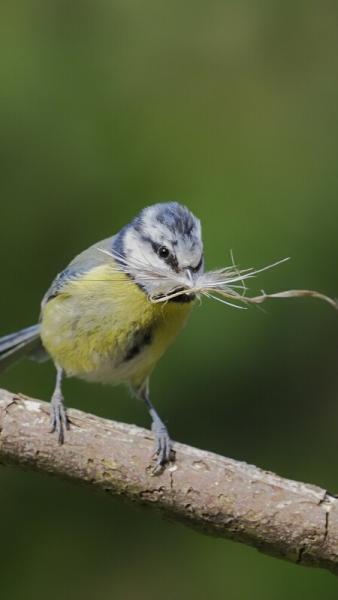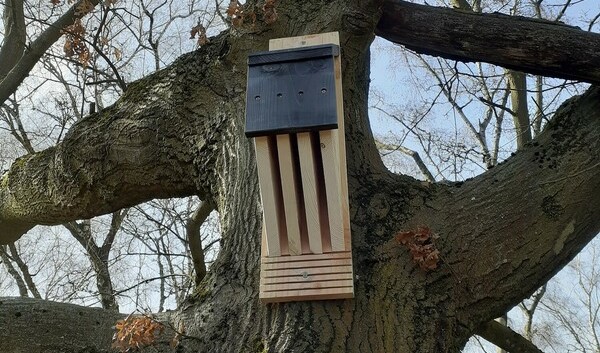
Birds and bats: An update on our nest boxes
In 2021, thanks to a grant from the Natural Networks Programme - funded by the European Regional Development Fund - we installed 20 bird nest boxes and 20 bat nest boxes in the Forest at Sheriffs Lench.
The Forest at Sheriffs Lench consists of approximately 170 hectares of both newly planted and ancient woodland, as well as grasslands and hedgerows. This assortment of habitats, neighboured by old orchards, makes it a great place for birds and bats.
Since then, we have monitored the activity around the area to determine any improvement in the biodiversity.
Bird boxes at Sheriffs Lench
Bird boxes are used for nesting, egg laying, and roosting. Small bird boxes are commonly used by bluetits, great tits, nuthatches, and sparrows.

68 species of bird have now been recorded at Sheriffs Lench, with 15 of these classified as UK Red List species and 18 as Amber List species.
Red List bird species recorded include skylark, fieldfare, linnet, and yellowhammer, with stock dove, tawny owl and kestrel amongst the Amber List species.
The presence of small birds attracts predators such as sparrowhawks, merlins, buzzards, kestrels, and owls. Peregrine falcons and red kites have even been spotted hunting around Sheriffs Lench. And, although a lot of these larger birds do not use the nest boxes, they are a good indicator of prey animal numbers in the area.
Owl boxes, however, support both tawny owls and barn owls – predatory birds which would typically nest in large crevices in trees. A female barn owl, which hatched at Sheriffs Lench in 2021, was found breeding a few miles south the following year. In 2022, three breeding pairs of barn owls were monitored at Sheriffs Lench. Between the three pairs, 11 successful chicks were hatched.

Bat boxes at Sheriffs Lench
Bat boxes are made to mimic the small gaps and crevices behind the bark of mature trees. This is where our small native bats would typically nest, species like common pipistrelle, soprano pipistrelle, Natterer’s bat, whiskered bat, and long-eared bat.
Bat boxes are mostly used for roosting. Depending on the size of the nest box, many bats can fit inside a single roost. Bats roost in different places through different seasons and tend not to use nest boxes for rearing their pups.
The bat boxes at Sheriffs Lench are yet to be occupied by roosting bats. This is because bats prefer older boxes that have been weathered. The boxes are monitored regularly for bat activity.

Helping wildlife thrive in the Forest
Would you like to help wildlife such as birds and bats flourish in the Forest? We offer a variety of volunteering opportunities to monitor biodiversity in the woodlands. Visit our volunteering page to find out more.



